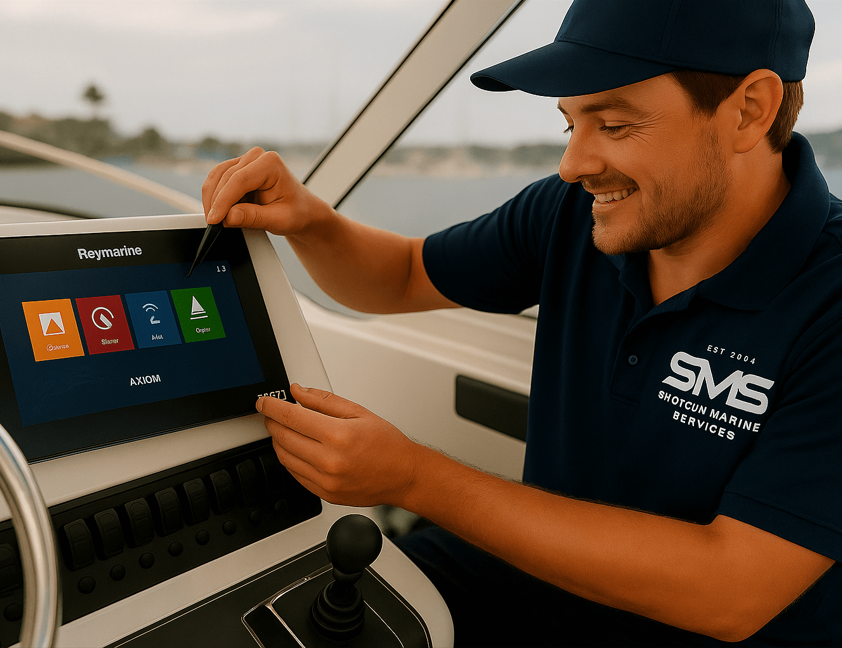These units are significantly beneficial.
Distorted or conflicted VHF communications between sailboats as well as commercial vessels are all as well typical however a AIS receiver could have given us far more information about neighbouring vessels without room for human error in communication, but exactly how and what?
What Is Marine AIS?
AIS (Automatic Identification System) is a brand-new help to accident avoidance operating on 2 specialized VHF channels. There are 2 sorts of AIS instruments:
AIS Transponders that transmit as well as obtain, and also
AIS Receivers, which do just that (and just that), as well as
AIS Lifejacket Transmitters
Marine AIS Transponders
There are 2 sorts of Transponders - Course A Transponders and Class B Transponders, both of which present the incoming information from other vessels on a radar-like display.
Course A marine Transponders are meant for commercial vessels, and are compulsory on all ships of 300 tonnes as well as over. These devices transmit the following information stream every 2 to 10 secs (depending on the vessel's rate) when underway, and also every 3 mins when at support: ~.
The vessel's special nine figure recognition MMSI number (Maritime Mobile Solution Identification number);.
The vessel's condition - 'at anchor', 'under way utilizing engine', 'not under command' and so forth;.
Rate of turn - to port or starboard, from 0 to 720 degrees per min;.
Rate over the ground in knots;.
Placement;.
Training course over ground;.
True heading;.
True bearing.
In addition, adhering to is relayed every 6 minutes: ~.
The vessel's seven figure IMO ship recognition number;.
The vessel's Radio Call Indicator;.
The vessel's name;.
Sort of ship and also cargo brought;.
Length, beam and draft;.
Location;.
ETA (estimated time of arrival) at destination.
Course B Transponders are intended for smaller vessels such as personal powerboats and sailboats.
The major differences between Course B as well as Class A transponders is the transmitting power; Class A systems requiring as much as 12.5 watts, and Class B devices managing on a far more parsimonious 2 watts giving them an effective variety of around 5 to 10 miles.
Moreover, Class B transponders are not required to transfer the vessel's IMO number, location or estimated time of arrival.
Marine AIS Receivers.
These devices will certainly get and also display info about other vessels however do not send information, which indicates their owners can see other ships yet those ships can not see them. .
If you have actually obtained a chartplotter and an Receiver (much cheaper than a Course B transponder), as well as can hook it approximately your VHF antenna by a splitter, the vessel's placement will be suggested on your plotter- given certainly both units work.
An arrowhead will certainly show direction of travel (the longer arrow the faster the vessel is relocating), a bar on the arrow reveals if the vessel is transforming and also which way. Float over the ship's position with the arrow and also all the vessel-related data will certainly show up.
You're promptly familiar with all ships' motions around you, course adjustments are shown pretty much instantaneously - much faster than radar.
VHF Radios with IntegrationAIS.
Some DSC VHF marine radios can currently be bought with an integratedAIS Receiver inbuilt.
No demand for an antenna splitter with these; a single wire connecting the VHF to the chartplotter is all that's required. This is the one I've mounted:.
AIS Lifejacket Transmitters.
If you're unfavorable enough to fall over the side, specifically at night in lively conditions, you will quickly be lost from view as well as your opportunities of rescue are slim.
Nevertheless, with one of these little devices affixed to your lifejacket the chance of rescue are substantially enhanced.
Giving your mothership - or any kind of various other vessel within a four mile array - has a receiver your specific placement will certainly appear on display.
If you desire various other vessels to know you're out there, you must fit a Course B transponder. These are more economical than a Course A device (however more than a Marine AIS Receiver) yet make ships familiar with your position, course and also speed and also the truth that you're a cruising vessel.
Course B systems do give you the option of reverting to obtain setting only, as sadly, in some piratical components of the globe, invisibility and also privacy may be the wiser strategy.
Shotgun Marine offer advice and product and price information on the website. Call for for price or product information.


